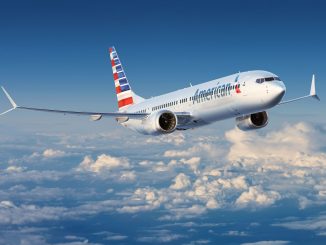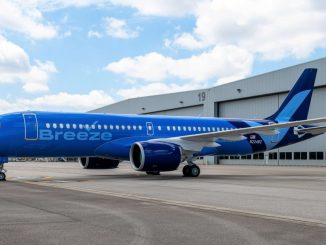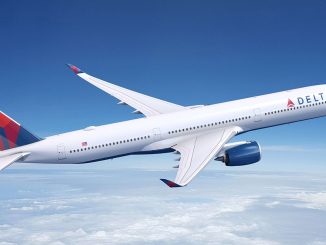
Alaska Airlines flight AS1282, operated by a three-month-old Boeing 737 Max 9 suffered an explosive depressurisation shortly after takeoff from Portland, Oregon (PDX), whilst bound for Ontario International (ONT) in Los Angeles on Friday 5th January. The aircraft was climbing through approximately 16,000 feet when a plugged emergency exit blew out from the port side of the fuselage just aft of the wing. The NTSB (National Transportation Safety Board) are actively investigating the incident with support from Boeing.
Fortunately, nobody was sitting in the row of seats next to the where the blow-out occurred and nobody on board the aircraft was harmed. The 737 immediately returned to Portland to perform an emergency landing.
In response to the incident, Alaska Airlines, which operates 65 737 Max 9s, grounded its entire fleet of the type to allow for inspections (a seemingly quick process) before allowing them to fly again. Many were back in the sky hours after the inspections being announced.
The area in question is a door plug which features on 737-900ER and 737 Max 9 models. If the aircraft is configured to carry more than 189 passengers, there is an extra emergency exit aft of the wings, to meet safety regulations with regards to emergency evacuations. When the aircraft is configured with less than 189 seats (as is the case at Alaska Airlines), this exit is replaced with a plug, which then resembles a continuous piece of the fuselage and is not noticeable from the cabin. This saves weight and maintenance requirements over having the door fitted and active. The plug can be replaced with an emergency exit (and vice versa) should the operator change the interior configuration of the aircraft.
Jon Ostrower of The Air Current has reported that the aircraft that operated flight AS1282 (N704AL) had been removed from all ETOPS (Extended Twin-engine Operations) after intermittent pressurisation issues on its previous two flights. This limits the distance (in flying time at cruise) from which the aircraft is allowed to fly from a suitable emergency diversion airport.
In a statement, Boeing said: “We are aware of the incident involving Alaska Airlines Flight #AS1282. We are working to gather more information and are in contact with our airline customer. A Boeing technical team stands ready to support the investigation.”
The US aviation regulator, the Federal Aviation Authority (FAA) have subsequently issued an Emergency Airworthiness Directive for the 737 Max 9 with the following accompanying statement: “The FAA will order the temporary grounding of certain Boeing
737 MAX 9 aircraft operated by U.S. airlines or in U.S. territory.
The Emergency Airworthiness Directive (EAD) that will be issued shortly will require operators to inspect aircraft before further flight that do not meet the inspection cycles specified in the EAD. The required inspections will take around four to eight
hours per aircraft.
The EAD will affect approximately 171 airplanes worldwide.”
Boeing has suffered ongoing quality control issues with the 737 Max family line, along with the 787 Dreamliner and KC-46 Pegasus (a militarised tanker variant of the Boeing 767-200 airliner), all of which have previously led to production and delivery delays of these aircraft.
Matt is a Berlin-based writer and reporter for International Flight Network. Originally from London, he has been involved in aviation from a very young age and has a particular focus on aircraft safety, accidents and technical details.



